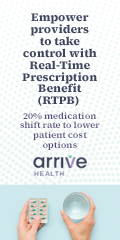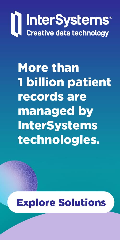Readers Write: Payment Cost and Confusion Continue to Frustrate Patients. Why Is Healthcare So Late to the Game?
Payment Cost and Confusion Continue to Frustrate Patients. Why Is Healthcare So Late to the Game?
By Tom Furr
Tom Furr is founder and CEO of PatientPay.

More than two years after a Kaiser Family Foundation survey found that 100 million American adults wrestle with medical debt, cost and affordability of care remain top concerns for consumers. Half of adults say that it’s difficult to afford care, a 2024 KFF poll found, and one in four have skipped or delayed care due to cost concerns.
Could 2025 be the year when the healthcare industry takes bigger, bolder steps toward easing these concerns by running a more automated and patient-friendly operation? In a year when medical costs are expected to rise about 8% and commercial healthcare spending could rise to its highest level in 13 years, according to a PwC analysis, one would argue that it should be.
According to a recent William Blair report, Consumer-Centric Healthcare: 2025 Update, US healthcare spending continues to outpace that of comparable countries with $12,555 in healthcare spending per person, “$4,000 greater than any other high-income nation, yet the nation falls behind most developed countries when it comes to health outcomes. And while this spending gap continues to widen, we’re not seeing better outcomes for the money spent.
“If federal health spending accounted for the same share of GDP that it did in 1973, the budget would be balanced,” the report states. “If it were the same as in 2000, the deficit would be 2.5% of GDP, less than both the 1946-2023 and 1962-2023 averages.” I would be shocked if this fact were not on DOGE’s radar, since Elon Musk was the first to ask why the government uses “cost-plus contracts” for military and space projects. I guess the space challenge between SpaceX and Boeing shows that having more capabilities with less expense ultimately wins the race.
Yet even as federal requirements for hospital price transparency continue to be put into play, the types of information patients want most — their out-of-pocket costs after insurance and their options for payment — remain challenging to determine at some organizations. It’s an area where digital tools that offer automation plus reduced cost for patient billing and collection to help reduce administrative expenses. One organization that currently devotes eight people to payment processing found that it could reduce manpower for this task to one person with an automated solution.
A New Era for the Patient Financial Experience
The proportion of self-pay patients has risen sharply since the end of Medicaid continuous enrollment, including for emergency visits among patients in all age groups. Meanwhile, as healthcare costs increase, employee pay raises have slowed. These are signs that healthcare organizations should reexamine their approach to automation, in particular for the patient financial billing and payment process.
A Deloitte survey of healthcare leaders suggests some organizations are poised to do so. Most leaders surveyed believe automation will help with cost and affordability for the healthcare industry this year, with 53% saying their organization will focus on improving the consumer experience, engagement, and trust while reducing the cost to achieve efficiencies and increase productivity.
To truly make an impact, patient financial services teams should look to automation to communicate financial responsibility, resources, and payment options in ways that meet patients where they are. This means sharing information in ways that can be easily understood regardless of a person’s education level or their native language. It also means making sure information is available in a variety of formats, including via mobile phone, given that 98% of American adults own a mobile phone. One company only allows patient payments to be set up after a call is made, even though most patients want to set up their payment online while reviewing their bill. Limiting patients’ options is a dissatisfier in an era of consumer-driven convenience.
Making the Right Connections to Ease Payment Concerns
In the quest to cure payment confusion and strengthen consumer trust, how can healthcare revenue cycle teams most effectively communicate financial information to patients? There are three things healthcare revenue cycle teams should consider.
1. Broadly communicate options for patient financial assistance.
This includes one-to-one conversations at the point of registration, via a widely publicized toll-free number, through posters and brochures in patient waiting rooms, on the provider’s website, and via secure text. It may also consist of discussions at the point of care, so long as the patient has been stabilized and consents. Discussions around financial assistance options should take place as early in the patient encounter as possible, according to guidance from the Healthcare Financial Management Association. It should also incorporate language the patient can readily understand, both verbally and in written form. Some organizations suggest that print and digital communications be written at a fifth-grade level and available in more than one language. When written communications are not available in the patient’s native language, seek a translator or translator service to ensure clarity.
2. Explore mechanisms for digital communication and payment.
Leading healthcare organizations leverage the device most consumers own, their mobile phone, to send payment notifications via secure text. It’s an option consumers gravitate toward: A 2024 J.P. Morgan survey reveals 75% of consumers want to pay their medical bills online. Yet 71% of healthcare providers most often collect payment from consumers via paper and manual processes, the survey found. “The trends reveal a deep disconnect between the healthcare industry and consumers,” according to the analysis.
Keys to successfully rolling out a text-to-pay model that collects more payments while reducing cost, such as the number of paper statements sent: Use patient payment behavior to determine which patients are most likely to respond to this approach. Give digital communications time to breathe, typically, one week, before following up. While some individuals will pay within minutes or hours of receiving a text notification, some may wait longer, although typically not more than a week.
3. Integrate EOBs with digital payment.
Providing access to the patient’s explanation of benefits (EOB) statement with their bill offers an opportunity to clear up questions around the out-of-pocket amount that is due from the start of the patient financial encounter. It gives patients a chance to review how much their insurance company has paid and how the amount due was calculated. By providing consumers a mechanism for verifying the amount that is due at the point of payment, this increases the likelihood of payment.
As healthcare leaders express a desire to strengthen the patient financial experience while also reducing their cost to accomplish better collection results, they should deploy a thoughtful approach to automation around financial communications and payment remittance before being pushed to do so by outside sources.



















































































I really don't take issue with older musicians, on the whole. If they have the urge to play, and they…